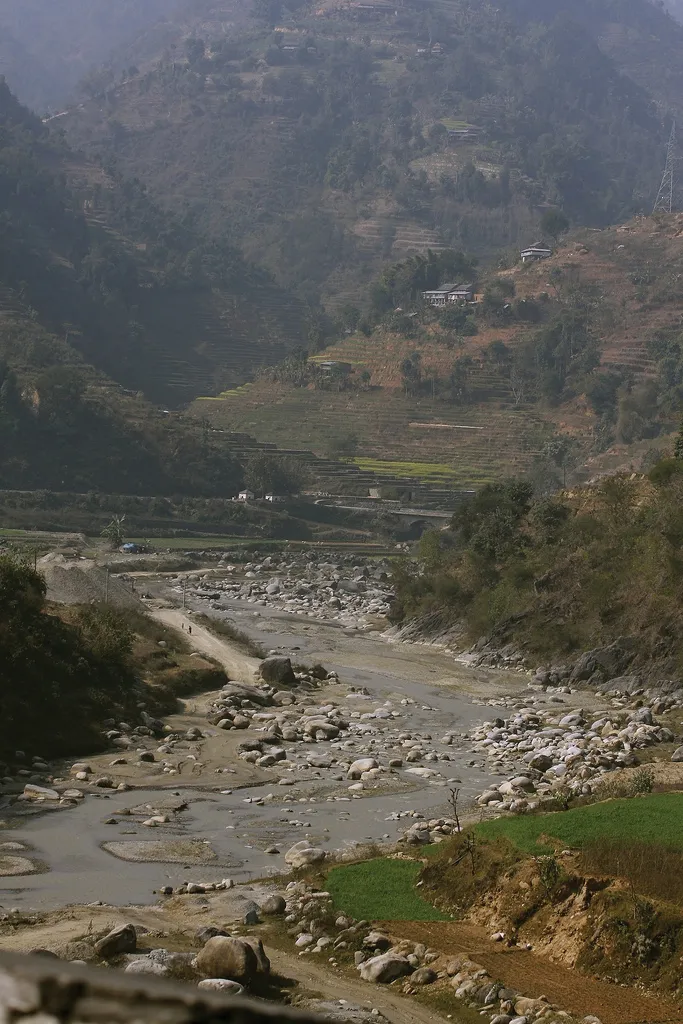The authorities in Nepal’s capital Kathmandu are working on widening the Kathmandu Valley road, a key project that has already seen the demolition of many structures along its boundary. The take-up of land has been eased by The Road Act, Nepal, which secures the roadside area of 25m on either side of the road on the National Highway.
May 11, 2012
Read time: 2 mins

The authorities in Nepal’s capital Kathmandu are working on widening the Kathmandu Valley road, a key project that has already seen the demolition of many structures along its boundary.
The take-up of land has been eased by The Road Act, Nepal, which secures the roadside area of 25m on either side of the road on the National Highway.
The Department of Roads has worked with the Kathmandu Metropolitan City and Kathmandu Valley Urban Development Committee on the clearing operation.
The aim of the project is to build additional lanes to address traffic congestion along the route, and the2437 Ministry of Physical Planning and Works is also constructing new and improvised bus stops to further reduce congestion and deliver more efficient traffic management.
The widening work is needed because of a significant increase in the numbers of vehicles in the Kathmandu Valley. Until now there has been no work to improve vehicle flow or provide effective traffic management while the existing road network has become insufficient for the growing numbers of vehicles in the area. This has resulted in the whole traffic system becoming clogged, particularly at peak periods during office hours.
In 1992 when Nepal’s government passed the Transportation Management Act there were 48,188 registered vehicles in the Kathmandu Valley and the total length of the road network in the area was 1,595km. There are now 567,670 registered in the Kathmandu Valley (not including other vehicles registered elsewhere in the country travelling through the valley or vehicles entering the country from neighbouring China or India).
Nepal’s Metropolitan Traffic Division claims there are now around 800,000 vehicles in the valley, and a number of areas will benefit from the new bus stops.
Nepal’s government is also constructing link roads and new roads to address traffic management, with the Kathmandu Valley Urban Development Committee working on the US$12 million Dhobikhola Corridor, a 5.7km road due for completion soon.
The take-up of land has been eased by The Road Act, Nepal, which secures the roadside area of 25m on either side of the road on the National Highway.
The Department of Roads has worked with the Kathmandu Metropolitan City and Kathmandu Valley Urban Development Committee on the clearing operation.
The aim of the project is to build additional lanes to address traffic congestion along the route, and the
The widening work is needed because of a significant increase in the numbers of vehicles in the Kathmandu Valley. Until now there has been no work to improve vehicle flow or provide effective traffic management while the existing road network has become insufficient for the growing numbers of vehicles in the area. This has resulted in the whole traffic system becoming clogged, particularly at peak periods during office hours.
In 1992 when Nepal’s government passed the Transportation Management Act there were 48,188 registered vehicles in the Kathmandu Valley and the total length of the road network in the area was 1,595km. There are now 567,670 registered in the Kathmandu Valley (not including other vehicles registered elsewhere in the country travelling through the valley or vehicles entering the country from neighbouring China or India).
Nepal’s Metropolitan Traffic Division claims there are now around 800,000 vehicles in the valley, and a number of areas will benefit from the new bus stops.
Nepal’s government is also constructing link roads and new roads to address traffic management, with the Kathmandu Valley Urban Development Committee working on the US$12 million Dhobikhola Corridor, a 5.7km road due for completion soon.







